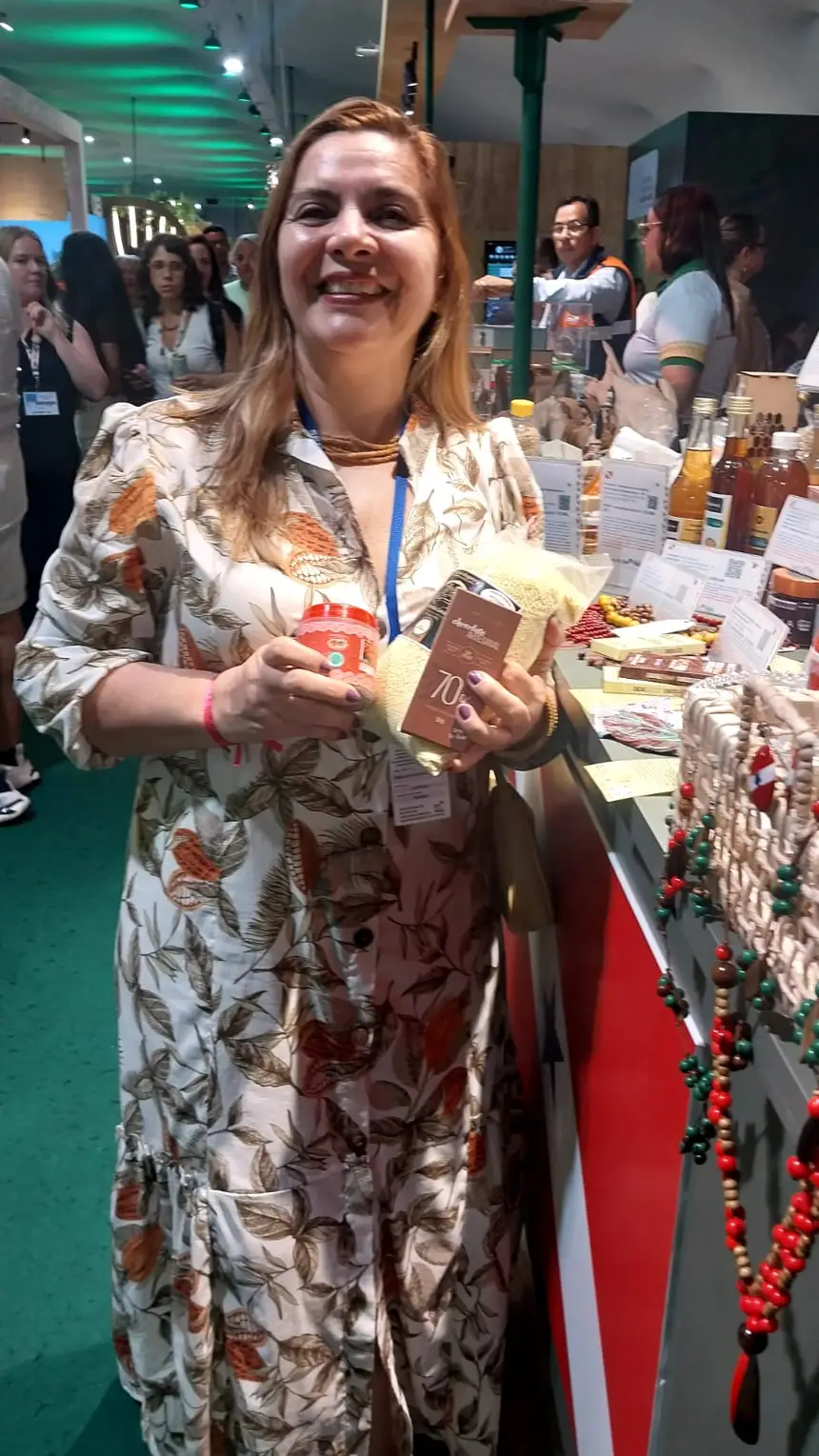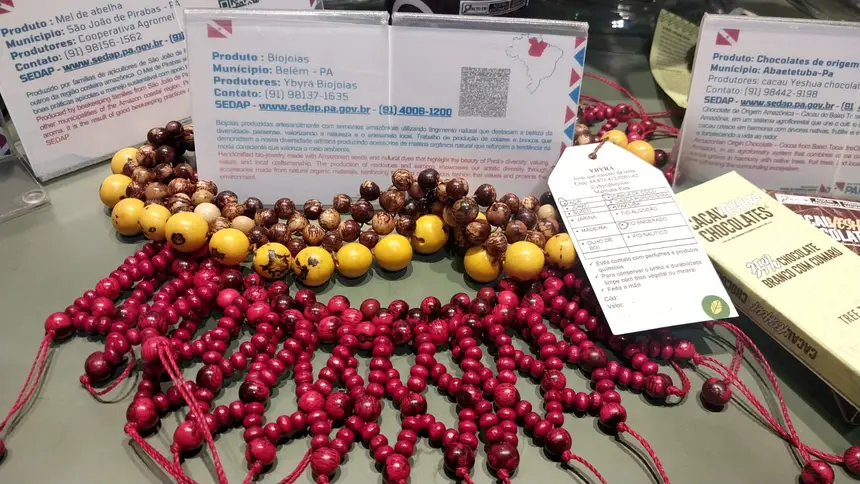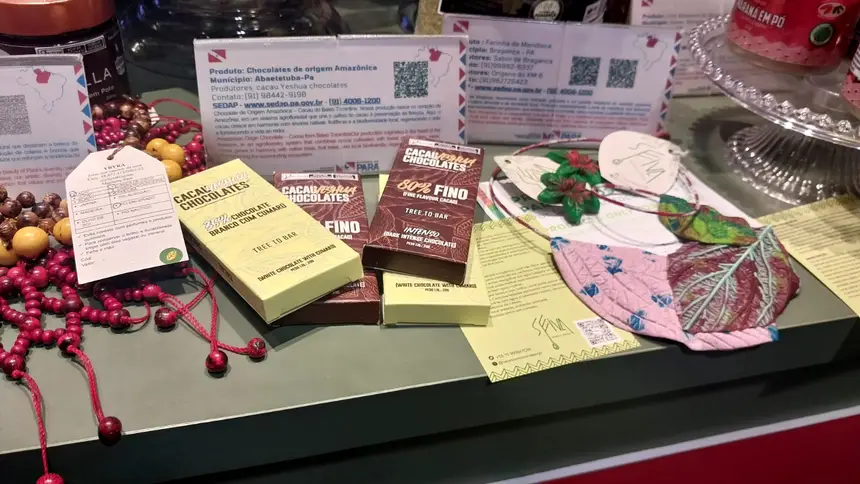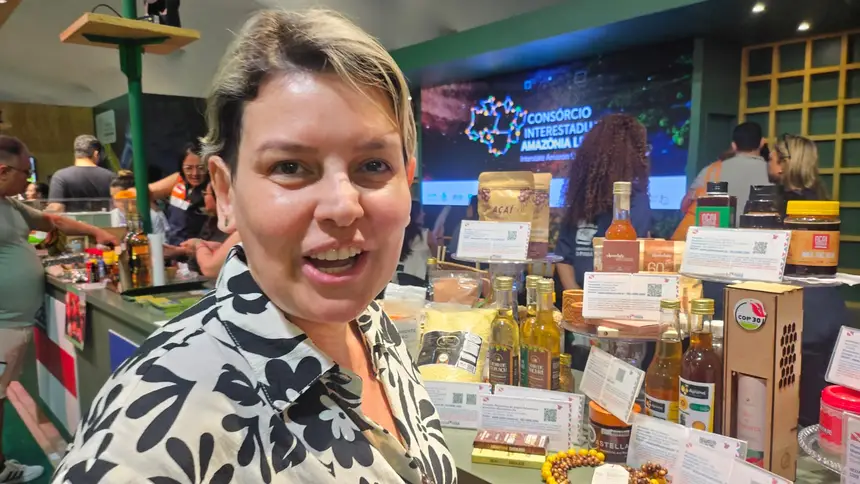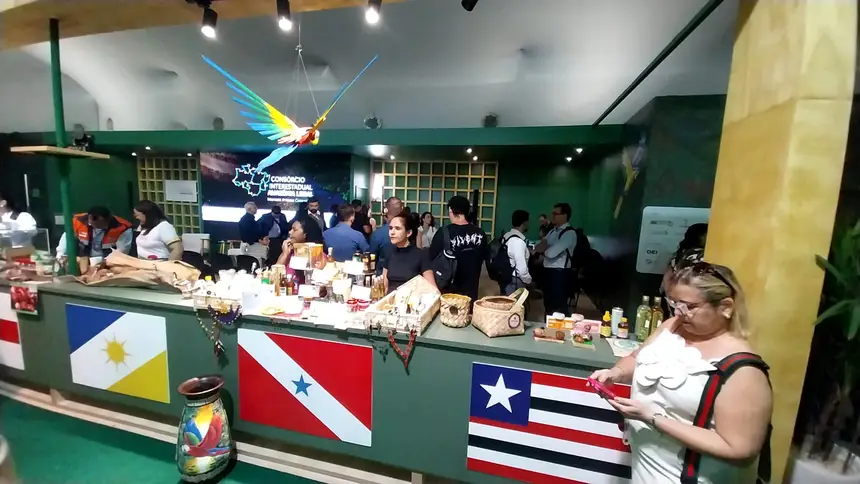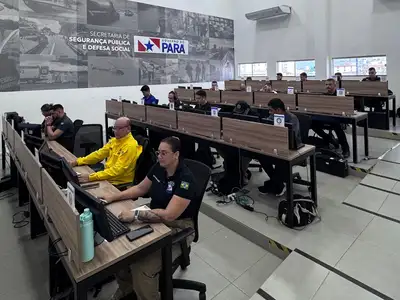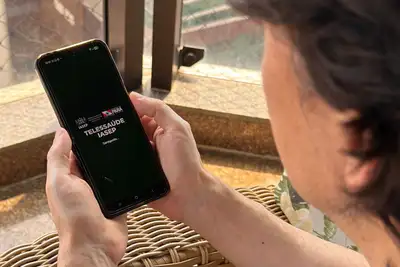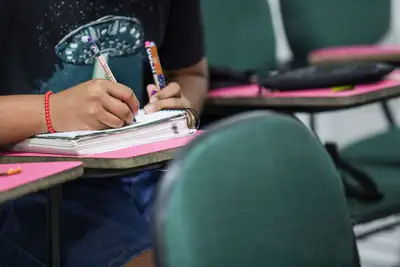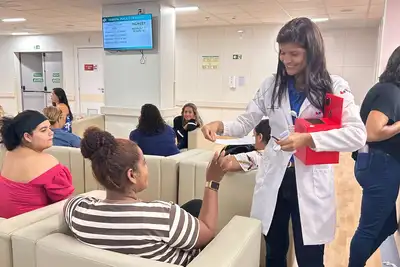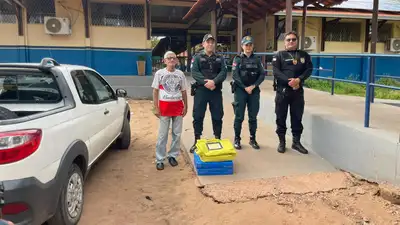Pará's Space in the Green Zone Attracts Visitors with Geographical Indication Products and Family Farming Handicrafts
Coordinated by Sedap and Seaf, the stand highlights traditional knowledge and productive identity from various regions of the state during COP30
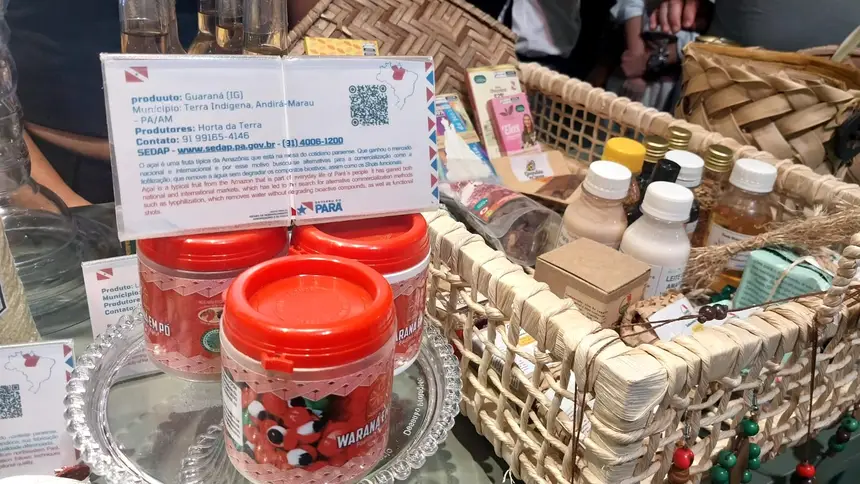
The Pará government stand in the space of the Inter-State Consortium of the Legal Amazon, one of the most visited in the Green Zone of COP30, has attracted the attention of national and international audiences by presenting products with Geographical Indication (GI) and handicrafts from family farming. The initiative is coordinated by the State Secretariat for Agricultural Development and Fisheries (Sedap), in partnership with the State Secretariat for Family Agriculture (Seaf).
Located in the City Park, the space is part of the official program of the 30th United Nations Conference on Climate Change, held in Belém, and brings together the nine states that make up the Legal Amazon.
Products with regional identity and INPI recognition
Among the GI products on display are the traditional flour from Bragança, the cacao from Tomé-Açu, and the guaraná Andirá-Marau, the latter produced in the Indigenous Land Andirá-Marau, on the border between Amazonas and Pará. All have been recognized by the National Institute of Industrial Property (INPI) as Indication of Origin.

The exhibition also features items that are in the certification process, such as Pará açaí and São João de Pirabas honey, as well as artisanal products from Icoaraci, which have also formally requested GI.
For Elionara Pinheiro, a master's degree holder in Intellectual Property and Technology Transfer for Innovation from IFPA, the potential of the Amazon for this type of recognition is still underutilized. "Each community holds a product with a unique identity that deserves to be protected and promoted. GI is an important tool to value traditional knowledge and the origin of our products," she assessed.
Elionara also highlighted that her master's project aims to propose a GI for tucupi from Belém, with the goal of valuing the product as cultural heritage and ensuring recognition and appreciation for local producers.
Institutional recognition and visit from authorities
The Pará stand also received a visit from the Minister of Integration and Regional Development, Waldez Góes, and the president of Sudam, Paulo Rocha, who learned about the GI products and the ongoing initiatives for new certifications.
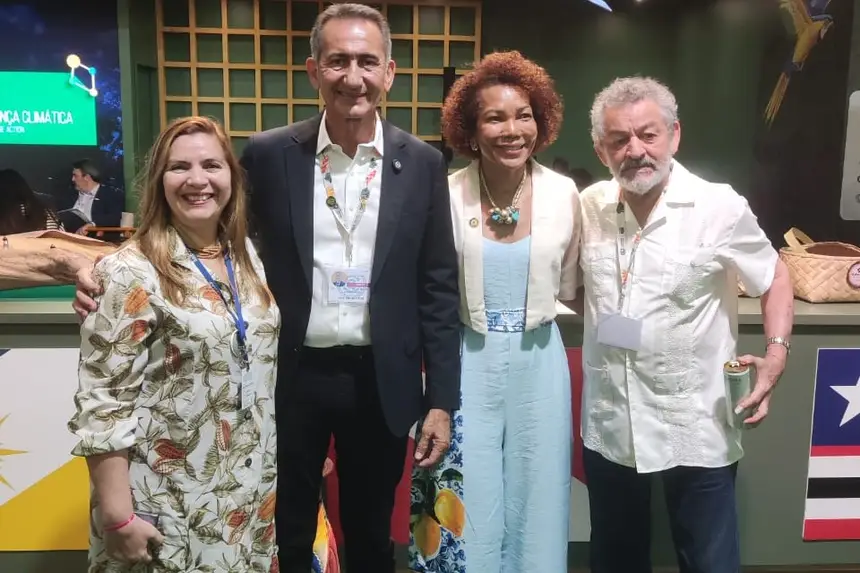
The head of Sedap, Giovanni Queiroz, and the agricultural director Marcos Grande accompanied the visit and highlighted the cultural and economic value of the presented products. "It is essential to show what Pará has produced based on traditional knowledge, which expresses the diversity of our regions and our communities," said the secretary.
Catalog with QR Code connects the public and producers
The agronomist from Sedap and coordinator of the State Program for Incentives to GIs and Collective Brands, Márcia Tagore, explained that all products are properly cataloged with informative tags and QR Codes that link to a description and contact information for the producers.
"It is a way to tell the story of each product and also to bring the final consumer closer to the producers. Many visitors are interested in acquiring the items, so we are facilitating this direct connection," emphasized Márcia.
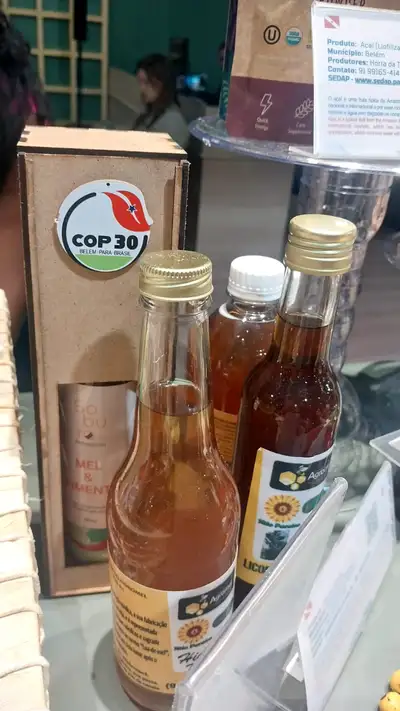
She also informed that, although they are only on display until the 21st, the date of the program's conclusion, the products will be available for sale on-site on the last day of the event.
Diversity of products and Amazonian wealth
In addition to the products recognized with GI, the stand also presents innovations such as freeze-dried açaí, açaí honey (produced from the pollination of the açaí tree by bees), and liqueurs from the Marajó archipelago. Casa Suzuki, from Tomé-Açu, is present with chocolates and liqueurs produced with GI cacao beans.
The space reinforces the potential of the Amazon to transform its biodiversity and traditional knowledge into high-value-added products, with respect for the origin and identity of the territories.
Regional integration
In addition to Pará, the space of the Inter-State Consortium of the Legal Amazon brings together the states of Acre, Amapá, Amazonas, Maranhão, Mato Grosso, Rondônia, Roraima, and Tocantins, promoting cooperation among the regions to enhance the socio-productive assets of the forest.


